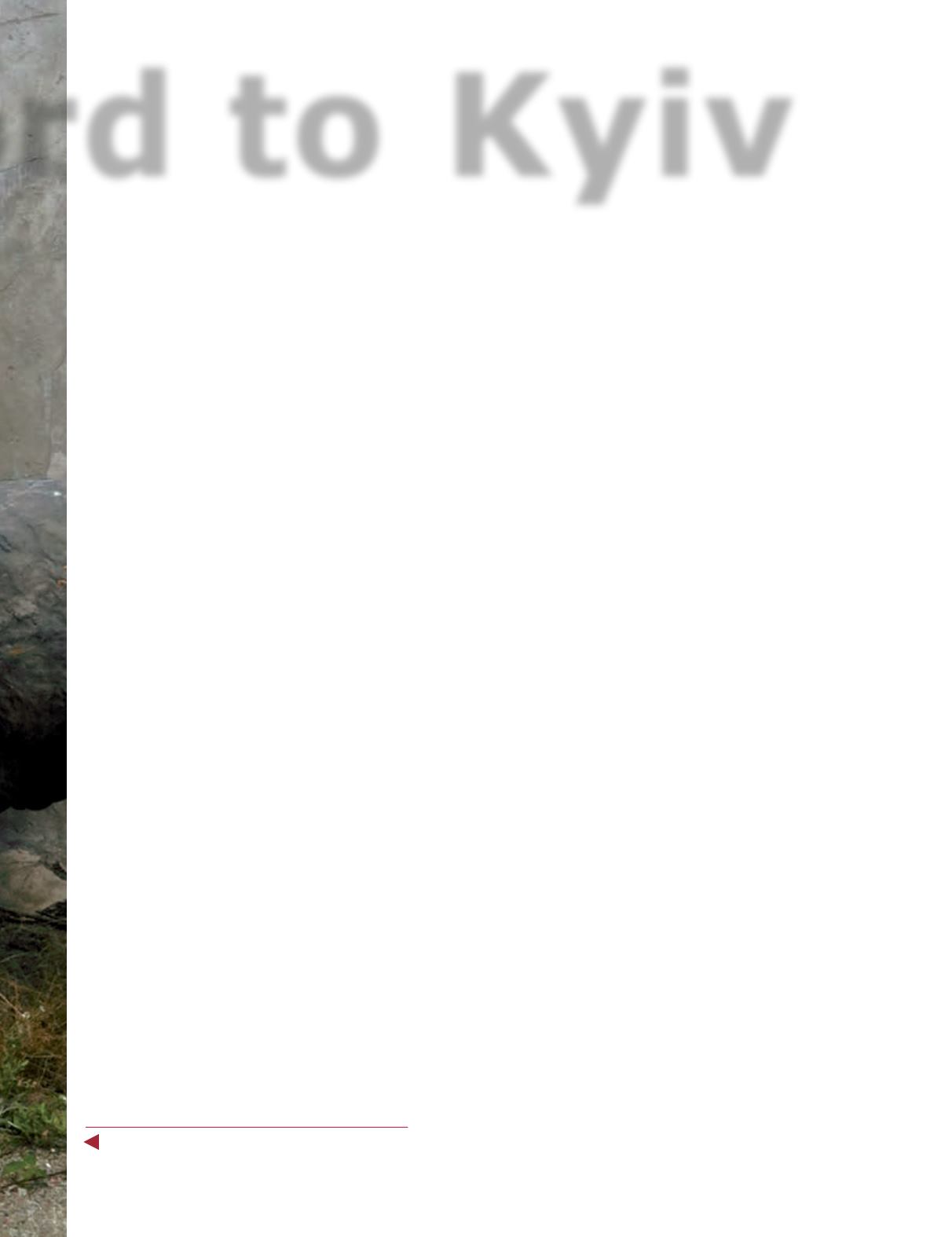
15
rd to Kyiv
The author writes about the rewards of life as a foreign correspondent
by James Brooke ’73
ARVAYHEER, Mongolia — Andr
é
Tolm
é
, a New Hampshire
carpenter, sized up his golfing terrain — thousands of
yards of treeless steppe. He wound up his 3-iron, and
then whacked the ball high into the clear June sky.
Tolm
é
was golfing across Mongolia, a country twice
the size of Texas. I, a Tokyo-based correspondent for
The New York Times
, loped alongside, covering one
stretch of his 2,322,000-yard, 11,880-stroke fairway.
Back in Ulan Batar, Mongolia’s capital, the smart set
of resident reporters (there always is one), had told me
that an eccentric American whacking golf balls across
Mongolia was not a story.
Au contraire
. In New York, editors were captivated
by my tale, putting it on the front page of the paper
on Sunday, July 4, 2004. Later, an editor told me that
an American golfing unguarded across a country was
welcome news for U.S. readers depressed over the
stories coming out of Abu Ghraib prison in Iraq.
In almost four decades as a foreign correspondent,
the bulk of the years for the
Times
, I have reported from
84 countries, largely in Latin America, Africa, Asia, and
the former Soviet Union. Throwing in the 17 additional
countries I have visited, that makes for 101. Yes, there
are times when I wake up and can’t remember where I
am. The seeds for those 40 years of globetrotting were
planted during my four high school years at St. Paul’s.
I have clear memories of skipping squash practice to
bury myself in the open stacks in the basement of the
old Sheldon Library, turning yellowing pages of an
American explorer’s account of his trip across Siberia
in the 1880s. Little did I know that, as a reporter, I
would have the privilege of visiting the old Czarist
prison camps on Sakhalin Island and, later, a Soviet
one, Perm-36.
One morning, in the fall of my Fourth Form year, as
I hurried to French class in the Schoolhouse, my eyes
focused on a bulletin board flyer for a program I had
never heard of: School Year Abroad. One year later, I
was in Rennes, France, living with a local family and
studying with SYA students and at Lycee Emile Zola.
Just before that Christmas, I had a eureka moment –
I could understand what my French family members were
saying at the dinner table. This confidence, that I could
actually learn a foreign language, pushed me down the
road of mastering four other languages. As a Sixth Former, I
spent Spring Term learning Spanish in Bogota, Colombia,
under the umbrella of an SPS Independent Study Project.
Later, at Yale, I studied Russian and Brazilian Portuguese.
When I wanted to study Portuguese in Brazil, Yale denied
me academic credit, deeming study in Rio de Janeiro not
quite serious enough. Bolstered by the experience of two
SPS overseas study programs, I went ahead and studied
in Brazil anyhow – and graduated college on time.
Later came Italian, for a wonderful three months be-
tween covering guerrilla wars in Central America for
The
Miami Herald
and working as “mass transportation cor-
respondent” (subways) for
The New York Times
. Later came
five years in Tokyo for the
Times
, struggling with Japanese.
Today, this hobby continues. I walk the streets of
Kyiv – the site of my latest post – deciphering signs in
Ukrainian, which shares 60 percent of its words with
Russian. At restaurants, I can now read almost an entire
menu in Ukrainian.
This winter, I took pride in negotiating the National
Opera website to buy tickets for the
Barber of Seville
– in Ukrainian. But I missed the fine print. I settled into
my seventh-row, $8 seat, looking forward to Berta, Basilio,
and Bartolio singing in Italian. But something about the
performances sounded off. It turns out I had signed up
for three hours of the Italian opera sung in Ukrainian.
By definition, foreign correspondents must be insatiably
curious and flexible to the point of being human rubber
balls. The intellectual environment at St. Paul’s encour-
ages these traits. Flexibility is essential for a key part of
foreign correspondence – covering conflict.
Today, after covering 12 wars, I have decided to quit
while I am ahead and not volunteer to cover number 13.
From Kyiv, it is an 11-hour, 800 km drive down to the
front lines, where Ukraine’s Army battles secessionists.
No minor force, the secessionists are bolstered by 450
Russian tanks, more tanks than in the armies of Germany,
France, and Britain.
The other evening, the fog of my last war – in Libya –
came back to me in the safety of a New York City movie
theater. My sons, Alex ’10, William (Andover 2010), and I
Jim Brooke ‘73 with a fallen statue of Joseph Stalin
in Gori, Georgia, birthplace of the Soviet dictator.
(Photo by Vera Undritz, August 2013)


